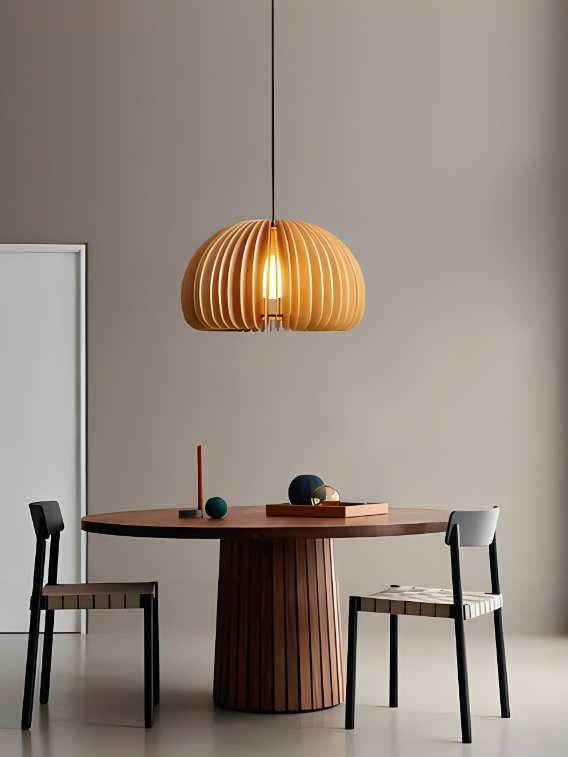The dining room is a space where families and friends gather to share meals and create memories. It is a place where conversations flow, laughter fills the air, and delicious food is enjoyed. In order to create the perfect ambiance for these special moments, proper lighting is essential. Dining room lighting not only illuminates the space, but it also sets the mood and enhances the overall aesthetic. Whether you prefer a cozy and intimate atmosphere or a bright and lively setting, the right lighting can transform your dining room into a space that is both functional and beautiful.
Importance of Proper Lighting in the Dining Room
Proper lighting in the dining room is crucial for several reasons. Firstly, it enhances the dining experience by creating a welcoming and comfortable atmosphere. The right lighting can make guests feel relaxed and at ease, allowing them to fully enjoy their meal and engage in conversation. On the other hand, poor lighting can make the space feel cold and uninviting, detracting from the overall dining experience.
In addition to setting the mood, lighting also plays a key role in safety and functionality. Adequate lighting ensures that guests can see their food clearly, preventing accidents such as spills or mishaps with cutlery. It also allows for ease of movement around the dining area, making it easier to serve and clear dishes. By providing sufficient illumination, proper lighting ensures that the dining room is not only aesthetically pleasing but also practical.
Types of Dining Room Lighting Fixtures
There are various types of lighting fixtures available for the dining room, each with its own pros and cons. Chandeliers are a popular choice for dining rooms as they add elegance and sophistication to the space. They come in a variety of styles and sizes, allowing you to choose one that complements your decor. However, chandeliers can be quite expensive and may require professional installation due to their weight.
Pendant lights are another option for dining room lighting priys. They are versatile and can be used to create a focal point above the dining table. Pendant lights come in a range of styles, from sleek and modern to vintage and rustic. They are also available in different sizes, making it easy to find one that suits your space. However, pendant lights may not provide sufficient illumination on their own and may need to be supplemented with other fixtures.
Wall sconces are a great choice for adding ambient lighting to the dining room. They can be installed on the walls, providing soft and diffused light that creates a warm and inviting atmosphere. Wall sconces are available in various designs and can be used to enhance the overall aesthetic of the space. However, they may not provide enough light for tasks such as reading or working at the dining table.
Choosing the Right Size and Style of Lighting Fixture
When selecting a lighting fixture for your dining room, it is important to consider both the size and style of the fixture. The size of the fixture should be proportionate to the size of the dining table and the room itself. A general rule of thumb is to choose a fixture that is about two-thirds to three-quarters the width of the table. This ensures that the light is evenly distributed and does not overpower the space.
The style of the lighting fixture should also complement the overall decor of the dining room. If you have a modern and minimalist space, a sleek and contemporary fixture would be a good choice. On the other hand, if you have a traditional or rustic decor, a chandelier with ornate details would be more appropriate. The style of the fixture should enhance the aesthetic of the room without overwhelming it.
It is also important to consider other factors such as ceiling height and room size when choosing a lighting fixture. If you have high ceilings, a larger fixture with multiple tiers would work well to fill the vertical space. On the other hand, if you have low ceilings, a flush mount or semi-flush mount fixture would be more suitable. Similarly, if you have a small dining room, a smaller fixture would be more proportionate, while a larger room can accommodate a larger fixture.
Layering Lighting for Ambiance and Functionality
Layering lighting is a technique that involves using multiple light sources to create different levels of illumination in the dining room. This not only enhances the ambiance but also adds functionality to the space. By combining different types of lighting fixtures, you can create a well-lit dining area that is both visually appealing and practical.
One way to layer lighting is by using a combination of overhead lighting and task lighting. Overhead lighting, such as a chandelier or pendant lights, provides general illumination for the entire room. Task lighting, on the other hand, focuses on specific areas such as the dining table or buffet. This can be achieved through the use of table lamps or wall sconces. By combining these two types of lighting, you can create a well-balanced and versatile lighting scheme.
Another way to layer lighting is by using dimmer switches. Dimmers allow you to adjust the brightness of the lights, allowing you to create different moods and atmospheres in the dining room. For example, you can dim the lights for a romantic dinner or increase the brightness for a lively gathering. Dimmers also help to save energy and extend the life of your bulbs.
Placement of Lighting Fixtures in the Dining Room

The placement of lighting fixtures in the dining room is crucial for both functionality and ambiance. When it comes to overhead lighting, such as chandeliers or pendant lights, it is important to position them directly above the dining table. This ensures that the light is focused on the area where it is needed most. The bottom of the fixture should be about 30 to 36 inches above the table to provide sufficient illumination without obstructing the view.
For task lighting, such as table lamps or wall sconces, it is important to position them in areas where they will be most useful. Table lamps should be placed on side tables or buffets to provide additional light for reading or working at the dining table. Wall sconces can be installed on the walls near the dining table to provide soft and diffused light.
Bulbs and Color Temperature for Dining Room Lighting
The type of bulbs and color temperature you choose for your dining room lighting can greatly affect the ambiance and functionality of the space. There are several types of bulbs available, including incandescent, halogen, fluorescent, and LED. Each type of bulb has its own pros and cons in terms of energy efficiency, lifespan, and color rendering.
LED bulbs are a popular choice for dining room lighting due to their energy efficiency and long lifespan. They consume less energy than traditional incandescent bulbs and can last up to 25 times longer. LED bulbs also come in a range of color temperatures, from warm white to cool white. Warm white bulbs create a cozy and inviting atmosphere, while cool white bulbs provide a brighter and more energetic feel.
Color temperature is measured in Kelvin (K) and refers to the color appearance of the light emitted by the bulb. Lower Kelvin values, such as 2700K, produce warm white light that is similar to traditional incandescent bulbs. Higher Kelvin values, such as 5000K, produce cool white light that is similar to daylight. The choice of color temperature depends on personal preference and the desired ambiance of the dining room.
Energy Efficiency and Cost-Effective Dining Room Lighting
Energy efficiency and cost-effectiveness are important considerations when it comes to dining room lighting. By choosing energy-efficient lighting fixtures and bulbs, you can reduce your energy consumption and lower your electricity bills. LED bulbs, for example, consume less energy than traditional incandescent bulbs and can save up to 80% on energy costs.
In addition to energy efficiency, it is also important to consider the initial cost and lifespan of the lighting fixtures and bulbs. While LED bulbs may be more expensive upfront, they have a longer lifespan and require less frequent replacement. This can result in long-term cost savings as you will not have to replace the bulbs as often.
Maintenance and Cleaning of Dining Room Lighting Fixtures
Proper maintenance and cleaning of dining room lighting fixtures are essential for ensuring optimal performance and prolonging their lifespan. Regular dusting of the fixtures with a soft cloth or feather duster can help to prevent the buildup of dirt and grime. For more thorough cleaning, you can use a mild detergent diluted in warm water. Be sure to turn off the power to the fixture before cleaning and avoid using abrasive cleaners or scrub brushes that can damage the finish.
It is also important to check the bulbs regularly and replace any that are burnt out or flickering. This not only ensures that the fixtures are providing sufficient illumination but also prevents potential safety hazards such as overheating or electrical issues. When replacing bulbs, be sure to follow the manufacturer’s instructions and use bulbs with the correct wattage and base type.
Achieving the Perfect Dining Room Lighting Ambiance
In conclusion, dining room lighting plays a crucial role in creating the perfect ambiance and enhancing the functionality of the space. By choosing the right lighting fixtures, layering lighting, and considering factors such as size, style, placement, bulbs, and color temperature, you can create a dining room that is both visually appealing and practical.
Experiment with different lighting options and find what works best for your individual needs and preferences. Whether you prefer a cozy and intimate atmosphere or a bright and lively setting, the right lighting can transform your dining room into a space that is perfect for sharing meals and creating memories. So go ahead, dim the lights, light the candles, and enjoy a wonderful dining experience in your beautifully lit space.




